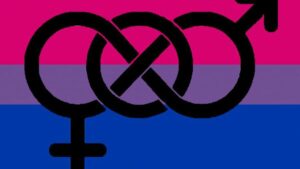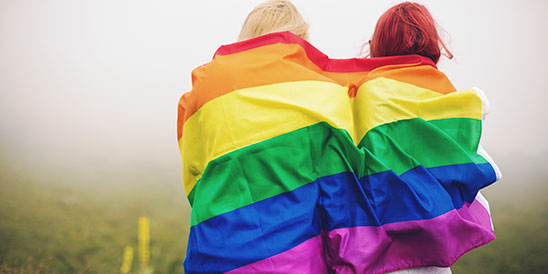Sexual orientation is a deeply personal aspect of human identity, encompassing a diverse range of experiences and attractions. Among the many sexual orientations, gay and bisexual are two widely recognized identities. Understanding these terms and their significance is crucial for promoting inclusivity and respecting the diversity of human sexuality. In this blog, we will delve into the definitions, experiences, and challenges faced by individuals identifying as gay or bisexual.
Contents
- 1 Defining Gay
- 2 Defining Bisexual
- 3 History and Progress
- 4 Challenges Faced by the LGBTQ+ Community
- 5 Coming Out and Self-Acceptance
- 6 Mental Health and Well-being
- 7 Relationships and Dating
- 8 Legal Rights and Protections
- 9 LGBTQ+ Representation in Media
- 10 Misconceptions and Stereotypes
- 11 Intersectionality and Diversity
- 12 Celebrating Pride
- 13 Conclusion
Defining Gay
The term “gay” is commonly used to describe individuals who are primarily attracted to individuals of the same gender. Gay men are emotionally, romantically, and sexually drawn to other men, while gay women are attracted to other women. The term “gay” can be used for both men and women, though sometimes “lesbian” is used specifically to refer to gay women.
It is essential to recognize that sexual orientation is not a choice but an inherent part of an individual’s identity. Being gay is not synonymous with being promiscuous, having specific behavioral traits, or conforming to stereotypes. Sexual orientation is about the capacity to form emotional and sexual connections with individuals of a specific gender.
Defining Bisexual

The term “bisexual” refers to individuals who experience attraction to both their gender and other genders. Bisexual people may feel emotionally, romantically, and sexually drawn to both men and women or people of any gender identity. It is important to emphasize that bisexuality is not limited to a binary understanding of gender; it encompasses attraction to individuals regardless of their gender identity.
Bisexual individuals may experience their attraction fluidly, with varying degrees of preference or fluctuation in their attraction to different genders over time. It is crucial to understand bisexuality as a valid sexual orientation, rather than a phase, confusion, or indecisiveness.
History and Progress
The history of gay and bisexual rights is a testament to the resilience, bravery, and collective efforts of individuals and communities fighting for equality and acceptance. Over the years, significant progress has been made in challenging societal norms, advocating for legal reforms, and fostering a more inclusive society.
From the Stonewall Riots to legal victories and increased visibility, the progress made in the struggle for LGBTQ+ equality is remarkable. However, challenges persist, and the fight for full acceptance and equal rights continues. By understanding and celebrating this history, we can work towards creating a future that embraces diversity, inclusivity, and equality for all.
Challenges Faced by the LGBTQ+ Community
Both gay and bisexual individuals face unique challenges and prejudices in society, including:
- Stigma and Discrimination: Homophobia and biphobia persist in many societies, leading to marginalization, prejudice, and discrimination against individuals who identify as gay or bisexual.
- Coming Out: Coming out, the process of disclosing one’s sexual orientation, can be a complex and emotional journey for gay and bisexual individuals. It involves risks, such as rejection, judgment, and strained relationships, but can also lead to self-acceptance, support, and a sense of belonging.
- Bicultural Stress: Gay and bisexual individuals may experience additional stress due to conflicts between their sexual orientation and cultural or religious beliefs. This can result in feelings of isolation and internal struggle.
- Mental Health: The challenges faced by gay and bisexual individuals can contribute to higher rates of mental health issues, including depression, anxiety, and substance abuse. Supportive environments, access to mental health resources, and LGBTQ+-inclusive therapy are essential for promoting their well-being.
- Lack of Visibility and Representation: While progress has been made, the representation of gay and bisexual individuals in media, literature, and public life remains limited. Increased visibility and positive representation can help combat stereotypes and foster greater understanding and acceptance.
Coming Out and Self-Acceptance

Coming out is an individual experience that varies greatly from person to person. It involves acknowledging and accepting one’s sexual orientation or gender identity, and then choosing to share that information with others. This process can be liberating and empowering, but it can also be filled with uncertainty, fear, and anxiety.
Challenges and Considerations
Coming out can present unique challenges and considerations that individuals must navigate. These challenges may include:
- Internal Struggles: Coming to terms with one’s own identity can be a complex and emotional process. Individuals may experience confusion, self-doubt, and fear of rejection from themselves and others.
- Fear of Rejection: Fear of rejection from family, friends, and society can be a significant barrier to coming out. The anticipation of negative reactions can create anxiety and hesitation.
- Cultural and Religious Factors: Cultural or religious beliefs and expectations may add a layer of complexity to the coming out process. Individuals may face conflicting values and fear the loss of acceptance within their communities.
- Timing and Safety: Deciding when and how to come out requires careful consideration of personal safety and well-being. Some individuals may need to assess their support networks and create a plan to ensure their emotional and physical security.
The Power of Self-Acceptance
Self-acceptance is a vital aspect of the coming-out journey. It involves embracing one’s sexual orientation or gender identity with love, compassion, and understanding. Self-acceptance is not a one-time event but an ongoing process of learning, growth, and self-love.
Benefits of Self-Acceptance
- Authenticity and Personal Growth: Embracing one’s true self fosters authenticity and personal growth. It allows individuals to live in alignment with their values, desires, and identity, leading to increased self-confidence and happiness.
- Emotional Well-being: Self-acceptance can improve mental and emotional well-being. It reduces internalized homophobia, shame, and self-judgment, replacing them with self-love, self-worth, and a positive self-image.
- Building Supportive Networks: Self-acceptance creates a foundation for building supportive relationships and communities. By loving and accepting themselves, individuals can attract and cultivate meaningful connections with others who accept them for who they are.
Mental Health and Well-being
Mental health disparities Gay and bisexual individuals may face higher rates of mental health issues, including depression, anxiety, and suicidal ideation, due to the challenges associated with societal stigma and discrimination. It is crucial to provide accessible mental health support and address these disparities.
Promoting well-being Promoting mental well-being requires creating safe and inclusive environments that foster acceptance and understanding. Accessible mental health resources, community support, and destigmatizing conversations about mental health can contribute to the overall well-being of gay and bisexual individuals.
Relationships and Dating

Navigating relationships Gay and bisexual individuals navigate relationships similarly to heterosexual individuals. They seek love, companionship, and emotional connections. However, they may face unique challenges such as societal judgment, family acceptance, and legal obstacles in certain regions.
Online dating and community-building Online platforms and dating apps have provided avenues for gay and bisexual individuals to connect and build relationships. These platforms have played a significant role in fostering a sense of community and reducing feelings of isolation.
Legal Rights and Protections
Progress in legal rights Legal recognition and protection for gay and bisexual individuals have improved in recent years. Same-sex marriage is legalized in many countries, and anti-discrimination laws have been enacted to safeguard the rights of LGBTQ+ individuals. However, disparities still exist, and further progress is needed.
Ongoing challenges Despite advancements in legal rights, there are regions where homosexuality is still criminalized, and discrimination persists. Advocacy and continued efforts are necessary to ensure equal rights and protections for all gay and bisexual individuals.
LGBTQ+ Representation in Media
Importance of representation Representation in media plays a crucial role in shaping public perception and promoting acceptance. Positive and diverse portrayals of gay and bisexual individuals contribute to challenging stereotypes, fostering understanding, and empowering those within the community.
Progress and remaining gaps While there have been significant improvements in LGBTQ+ representation in media, gaps, and challenges persist. Further inclusivity is necessary to ensure a wide range of stories and experiences are accurately portrayed.
Misconceptions and Stereotypes
Debunking misconceptions Misconceptions and stereotypes surrounding homosexuality and bisexuality perpetuate discrimination and prejudice. It is essential to challenge these misconceptions, educate the public, and promote accurate information to foster acceptance and understanding.
The fluidity of sexual orientation Understanding the fluidity of sexual orientation is vital. It recognizes that individuals’ experiences and attractions can evolve and change over time. This fluidity should be respected and acknowledged.
Intersectionality and Diversity

Embracing diversity within the LGBTQ+ community The LGBTQ+ community is diverse, encompassing individuals from various backgrounds, ethnicities, cultures, and gender identities. Acknowledging and celebrating this diversity is essential to foster inclusivity and create a more representative and equitable society.
Intersecting identities Recognizing the intersecting identities within the LGBTQ+ community is crucial for understanding the unique challenges faced by individuals who belong to multiple marginalized groups. Intersectionality highlights the need for inclusive and comprehensive support systems.
Celebrating Pride
Pride celebrations provide an opportunity to celebrate the progress made, raise awareness, and foster a sense of community among LGBTQ+ individuals and allies. Also, Pride events around the world promote visibility, acceptance, and equality.
Pride as a catalyst for change Beyond the festivities, Pride catalyzes change. It inspires activism, promotes dialogue, and encourages ongoing efforts toward achieving full equality for the LGBTQ+ community.
Conclusion
The recognition and acceptance of gay and bisexual individuals are essential for fostering a more inclusive society. By understanding their experiences, challenges, and aspirations, we can collectively work toward creating a world that respects and celebrates the diversity of sexual orientation. Through support, advocacy, representation, and education, we can continue to make progress in achieving equality for all individuals, regardless of their sexual orientation.
Life may sometimes be challenging for bisexuals, but Online Bisexual Counseling can help. Get experienced LGBTQ therapists at PrideMantra: Book a trial LGBTQ therapy session.


